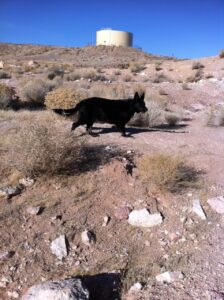K9 Training
The importance of training your four-legged friend is a critical part of building strong relationships with your dog.
When did we domesticate the wild wolf to create the modern-day K9?
According to the article How Wolf Became Dog the author concluded:
The exact timing and location of dog domestication are still unclear, but recent research suggests that hunter-gatherers, not settled agriculturalists, were the first to domesticate dogs. According to a recent DNA study, dogs were domesticated between 32,000 and 18,800 years ago, before the advent of agriculture around 12,000 years ago. (Morell, 2015)
There are a lot of theories on how this happens, I for one agree with biologist Raymond Coppinger PhD. He does not believe Stone Age man was capable of stealing a few-day-old wolf puppy and raising it while trying to survive. Dr. Coppinger believed “the wolves domesticated themselves. He suspects that the process would have begun at the end of the last Ice-Age approximately 15,000 years ago when people began to gather and live in one place for the first time. The appearance of these villages was fairly rapid and coincidental with the fossil evidence of dogs as we know them” (PBS Interview).
The wolves with the least fear or flight response to humans learn they could live off human scrapes left behind from large animal kills. Humans began to see the wolf react when other predators or large animals came into the area. The wolves became an early warning system for early man; thus the relationship became simpatico. This does not explain how Grey Wolves became poodles or any number of modern-day dogs. To understand this better we have to look at genetic experiments that have been ongoing for over 60 years in Russia.
For the last 59 years a team of Russian geneticists led by Lyudmila Trut have been running one of the most important biology experiments of the 20th, and now 21st, century. The experiment was the brainchild of Trut’s mentor, Dmitri Belyaev, who, in 1959, began an experiment to study the process of domestication in real time. He was especially keen on understanding the domestication of wolves to dogs, but rather than use wolves, he used silver foxes as his subjects. Here, I provide a brief overview of how the silver fox domestication study began and what the results to date have taught us (experiments continue to this day). I then explain just how close this study came to being shut down for political reasons during its very first year (Dugatkin 2018).
They started to breed the least aggressive foxes with one another and the more aggressive ones with other aggressive foxes. As predicted the least aggressive become calmer and essentially domesticate. The more aggressive foxes become extremely aggressive. However, an unexpected change happened in domesticated foxes. Their fur began to lighten, and the tails began to cruel; “ Fur Breeding Animals, Belyaev knew that many domesticated species share a suite of characteristics including floppy ears, short, curly tails, juvenilized facial and body features, reduced stress hormone levels, mottled fur, and relatively long reproductive seasons. Today this suite of traits is known as the domestication syndrome” (Dugatkin 2018).
This experiment showed that as domestication happened it also changed the physical appearance of the fox just as it did with wolves. Those selective breeding we made the changes rapidly within several breeding cycles.
When considering K9 training ensure you work with someone who knows all aspects of dog behavior, learning, and ethology. One must understand what motivates the dog and how a dog will learn best.

Citations
Dogs That Changed The World | What caused the domestication of wolves? | Nature | PBS. (2011, October 3). Nature. https://www.pbs.org/wnet/nature/dogs-that-changed-the-world-what-caused-the-domestication-of-wolves/1276/
Dugatkin, L. A. (2018). The silver fox domestication experiment. Evolution: Education and Outreach, 11(1). https://doi.org/10.1186/s12052-018-0090-x
Morell, V. (2015, July 1). How Wolf Became Dog. Scientific American.
https://www.scientificamerican.com/article/how-wolf-became-dog/
